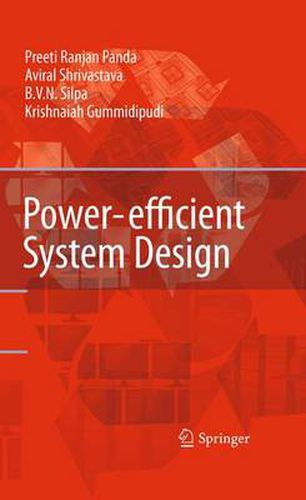Readings Newsletter
Become a Readings Member to make your shopping experience even easier.
Sign in or sign up for free!
You’re not far away from qualifying for FREE standard shipping within Australia
You’ve qualified for FREE standard shipping within Australia
The cart is loading…






This title is printed to order. This book may have been self-published. If so, we cannot guarantee the quality of the content. In the main most books will have gone through the editing process however some may not. We therefore suggest that you be aware of this before ordering this book. If in doubt check either the author or publisher’s details as we are unable to accept any returns unless they are faulty. Please contact us if you have any questions.
The Information and communication technology (ICT) industry is said to account for 2% of the worldwide carbon emissions - a fraction that continues to grow with the relentless push for more and more sophisticated computing equipment, c- munications infrastructure, and mobile devices. While computers evolved in the directionofhigherandhigherperformanceformostofthelatterhalfofthe20thc- tury, the late 1990’s and early 2000'ssaw a new emergingfundamentalconcern that has begun to shape our day-to-day thinking in system design - power dissipation. As we elaborate in Chapter 1, a variety of factors colluded to raise power-ef?ciency as a ?rst class design concern in the designer’s mind, with profound consequences all over the ?eld: semiconductor process design, circuit design, design automation tools, system and application software, all the way to large data centers. Power-ef?cient System Design originated from a desire to capture and highlight the exciting developments in the rapidly evolving ?eld of power and energy op- mization in electronic and computer based systems. Tremendous progress has been made in the last two decades, and the topic continues to be a fascinating research area. To develop a clearer focus, we have concentrated on the relatively higher level of design abstraction that is loosely called the system level. In addition to the ext- sive coverage of traditional power reduction targets such as CPU and memory, the book is distinguished by detailed coverage of relatively modern power optimization ideas focussing on components such as compilers, operating systems, servers, data centers, and graphics processors.
$9.00 standard shipping within Australia
FREE standard shipping within Australia for orders over $100.00
Express & International shipping calculated at checkout
This title is printed to order. This book may have been self-published. If so, we cannot guarantee the quality of the content. In the main most books will have gone through the editing process however some may not. We therefore suggest that you be aware of this before ordering this book. If in doubt check either the author or publisher’s details as we are unable to accept any returns unless they are faulty. Please contact us if you have any questions.
The Information and communication technology (ICT) industry is said to account for 2% of the worldwide carbon emissions - a fraction that continues to grow with the relentless push for more and more sophisticated computing equipment, c- munications infrastructure, and mobile devices. While computers evolved in the directionofhigherandhigherperformanceformostofthelatterhalfofthe20thc- tury, the late 1990’s and early 2000'ssaw a new emergingfundamentalconcern that has begun to shape our day-to-day thinking in system design - power dissipation. As we elaborate in Chapter 1, a variety of factors colluded to raise power-ef?ciency as a ?rst class design concern in the designer’s mind, with profound consequences all over the ?eld: semiconductor process design, circuit design, design automation tools, system and application software, all the way to large data centers. Power-ef?cient System Design originated from a desire to capture and highlight the exciting developments in the rapidly evolving ?eld of power and energy op- mization in electronic and computer based systems. Tremendous progress has been made in the last two decades, and the topic continues to be a fascinating research area. To develop a clearer focus, we have concentrated on the relatively higher level of design abstraction that is loosely called the system level. In addition to the ext- sive coverage of traditional power reduction targets such as CPU and memory, the book is distinguished by detailed coverage of relatively modern power optimization ideas focussing on components such as compilers, operating systems, servers, data centers, and graphics processors.